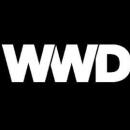Sweaty Betty continues to expand its retail footprint in SoCal
- Share via
Sweaty Betty recently opened the doors to its third Los Angeles-area store as the London-based company plots a larger expansion at retail.
The activewear company’s store, at 8551 Melrose Avenue in West Hollywood, follows openings over the past 12 months in Santa Monica and Venice. The company is eying a San Francisco store with a lease signed in a yet-to-be-revealed location in the midst of the permitting process. The company is also in talks for a lease farther south in Newport Beach, with all locations hitting on a retail sweet spot that looks to be in what president and U.S. chief executive officer Erika Serow described as “the flow of our customers’ everyday lives.” That means no malls or typical shopping destinations.
“The places she is going to work out, to get coffee or lunch or go and have a juice with friends,” Serow explained of the company’s selection of sites. “We’re really looking for places that have that vibe for us.”
The particular stretch of Melrose where the company’s latest store is located also features Urth Caffé, Cycle House and an incoming Dean & Deluca.
Sweaty Betty has big aspirations for its retail footprint.
Executives aren’t chaining themselves to a target door count they think the brand can grow to, but they do think it can expand to at least 50 stores in the U.S. over the next five years, with about eight to 10 of those opened over the next 12 months.
“But we absolutely do not see that as a cap,” Serow said. “We see that as a way to get in and lead the first round of influencers.”
The Sweaty Betty business today is split almost evenly between digital and physical stores, a mix Serow said the company would like to maintain.
“We’d like to keep that and we know that customers that are engaged with us, both digitally and in physical stores, they spend much more than a customer that is just an online customer or just [shopping] a retail store,” she said.
Sweaty Betty is also seeing success with its concessions in select Bloomingdale’s, although company-owned retail remains the dominant focus.
“We will be very choosy about locations that take us away from this everyday life and toward [traditional] retail,” Serow said. “We look for proximity to the best studios. We look for proximity to juice bars and coffee shops, and if we don’t feel that we can find that with the density that’s appropriate, then I think we would think about concessions. Our primary focus will be opening freestanding stores.”
The runway appears to be long for the business, with each door in the U.S. unlocking a new market. With digital transactions alone, 70 percent of those are from customers who are new to Sweaty Betty, while about 80 percent of the transactions at the company’s physical stores in the U.S. open for at least a year are from shoppers new to the brand.
As the business grows, Serow said it’s not about finding ways to differentiate from activewear lines in the market.
“When people talk about this [activewear] space getting crowded, I want to be really thoughtful about how we define what this space is because what we believe at Sweaty Betty and what we are seeing is this is not about what we call the ath-leisure market,” Serow said. “This is how women dress and the shift that we’re seeing in how women dress is seismic and I think it’s still underappreciated even though many recognize components of the trend….This is not about exercise clothes. This is about people incorporating active lifestyle or building a life around active lifestyle….If you think about this space as exercise clothes, it’s really crowded. But that’s not where we’re competing.”











